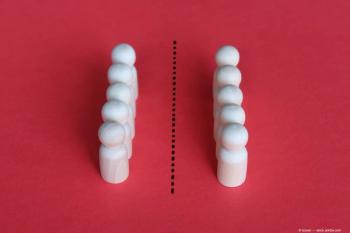
PolyActiva’s PA5108 glaucoma implant shows promising results in clinical trial, paving the way for long-term drug delivery
Key Takeaways
- PA5108 implant showed significant IOP reduction, addressing poor adherence issues with traditional eye drops by providing consistent drug delivery over 26 weeks.
- The biodegradable implant releases latanoprost with zero-order kinetics, leaving no residue post-dissolution, and minimizing adverse effects.
PolyActiva’s phase 2 clinical trial of its PA5108 glaucoma implant met efficacy and safety end points, demonstrating more than 20% reduction in IOP. The biodegradable implant offers sustained drug delivery for up to 26 weeks, addressing challenges of patient adherence and improving glaucoma treatment outcomes.
PolyActiva has announced promising results from its phase 2 clinical trial of PA5108, a novel glaucoma treatment implant. The trial met key efficacy and safety end points, showing significant reductions in IOP over 26 weeks.
According to the company, the clinical trial data represent a significant step forward in the company’s vision to provide long-term, reliable drug delivery for patients with glaucoma.
Seventeen participants were recruited to receive 2 PA5108 ocular implants 21 weeks apart, and 15 participants have now reached 48 weeks in the study.
Data were presented at the Eyecelerator conference in conjunction with the American Academy of Ophthalmology’s annual meeting in Chicago, Illinois, on October 17, 2024, and at AusBiotechInvest on October 29, 2024, in Melbourne, Victoria, Australia.
PolyActiva’s proprietary implant is designed to address the long-standing challenge of poor patient adherence with traditional eye drop therapy by ensuring accurate dosing over an extended period, potentially mitigating the risk of blindness associated with glaucoma progression.
The implant, constructed from a biodegradable polymer, is designed for sustained drug delivery, and unlike other treatments on the market, PolyActiva’s implant rapidly degrades once the drug is released, allowing for repeat dosing. With more than 80 million patients with glaucoma worldwide,1 the global demand for improved treatments is substantial, and excitingly, PolyActiva’s technology can potentially deliver therapies for other ocular diseases.
According to Michael Coote, MBBS, FRANZCO, GAICD, clinical professor at the University of Melbourne, PA5108 is a bioerodible polymer that releases latanoprost with zero-order kinetics for approximately 26 weeks from the time of delivery.
“The implant is delivered to the anterior segment through an easy-to-use delivery device, and the polymer rod is a thin strand that is slightly heavier than aqueous and tends to fall into the angle,” he explains. “The implant appears to be mildly adhesive to the iris and is transparent, so on occasion, it can be a little difficult to see.”
Coote said with a visible PA5108 implant, ophthalmologists can be comfortable knowing the drug is being delivered. With other options, the implant frequently remains present in the eye well after complete depletion of the drug.
“When the PA5108 implant has completely dissolved, it leaves no residue behind and it is usually impossible to find any evidence of where it was sitting in the eye,” he explains.
Coote adds that safety and efficacy findings from the phase 2 clinical trial are encouraging, with few clinically inadequate effects with implant-treated eyes.
“We observed a greater than 20% reduction in IOP based both on 8 AM and mean diurnal IOP readings over the course of the study,” he explains. “In an initial cohort of 10 patients who received 1 low-dose PA5108 implant, all the eyes got the full IOP-lowering effect over 26 weeks.”
Coote adds that in the eyes with the repeated dose (one implant on day 1 and one at week 22), they again saw a greater than 20% reduction in IOP at 8 AM and in mean diurnal IOP when compared with baseline out to 48 weeks and that there appear to be clinically significant tail effects 26 weeks after delivery of the second implant.
“We did not see any evidence of inflammation or corneal endothelial cell changes over the course of the trial,” he adds.
The PA5108 implants deliver therapeutic levels of medication for 26 weeks.
“We know this from dose-delivery studies, but we also know this from therapeutic efficacy, based on IOP reduction,” Coote says. “Given all that we know about the variability and unpredictability of patient medication adherence, this implant effectively removes adherence from the medical treatment equation.”
As for adverse events during the trial, Coote notes that 1 patient in the trial needed rescue medication for an IOP rise that occurred in both eyes (implant eye and fellow eye) 6 weeks into the study.
“Administration of the PA5108 implant involves an injection to the anterior chamber, and there are the usual adverse effects during local anesthetic, sterilizing the ocular surface, and the use of a speculum. Injections into the eye are becoming commonplace, and we are getting substantially better at them such that these effects were minimal and lasted a day or less,” he says.
Coote also explains that the measurement of IOP can involve a number of variables:
- ·The mechanism by which the measurement is taken
- ·Calibration issues
- ·The time of day that measurements are taken (noting that IOP is generally always higher in the morning and patients do not have their IOP measured at the same time each time they visit the clinic)
- ·The relationship to medication use (or lack of use)
“In addition, we know that it is likely that patients become more adherent with medication around the time of their appointment, knowing they will have their pressures checked,” he says. “With all these variables, adding medication mismanagement to this makes the assessment of risk by the ophthalmologist even more tenuous. Having an implant that delivers a constant daily dose of drug removes one of the significant variables, which is the medication self-administration.”
As PA5108 makes its way through the pipeline, Coote notes the 6-month implant will be entering clinical trials in the United States in early 2025.
“We are also planning a clinical study in Australia, which will start in 2025, where we will evaluate a second-generation product that we believe could offer 12 months of treatment,” he says.
Coote adds that 2 key areas will be of importance for glaucoma specialists. One is prostaglandin orbitopathy, which he explains is increasingly rearing its head and can be very problematic depending on how long patients have been taking prostaglandin drop medication.
“There seem to be populations in whom this adverse effect is more prevalent, but it’s probable that everyone is at risk to some extent,” he says. “We know from data generated to date with this PA5108 implant (and from other implantable prostaglandins) that the amount of active agent that seeps out from the anterior chamber into the orbit is virtually zero.”
Coote explains that this is in direct contrast with topical agents, where the prostaglandin is readily absorbed by periorbital tissues.
A second key area is ocular surface disease, with common adverse effects such as dry eye and irritation from topical medication, which can be painful for patients.
“As a colleague of mine says in the UK [United Kingdom], ‘One of the most common adverse effects of glaucoma is the treatment itself,’” he says. “Medication that is targeted to the organ both chemically and anatomically is markedly better. Patients could expect a reduction in ocular surface disease adverse effects if and when they have the choice of ocular implants over drops.”
On the back of these promising results, PolyActiva is preparing for a phase 2b clinical trial of PA5108.
“Glaucoma treatments today rely heavily on patient-administered eye drops, but adherence to this regimen is notoriously poor, with [findings from] studies showing that 40% to 90% of patients stop using their drops correctly after just 1 year,” says Vanessa Waddell, PolyActiva CEO.
Waddell explains the company is in the early stages of the clinical build and identifying the sites.
“We are conducting a phase 2b study in 75 patients, and that is our first US study for this this particular product,” she concludes. “We hope to be into phase 3 trials within the next 12 to 18 months. One of the challenges with drug delivery is that you do need to run reasonably long trials. Our phase 3 program will probably take 2 1/2 years. We're hopeful that we'll have this product on the market by 2029.”
Reference
1. Weinreb RN. Glaucoma worldwide: a growing concern. Glaucoma Research Foundation. Accessed November 22, 2024. https://glaucoma.org/articles/glaucoma-worldwide-a-growing-concern
Newsletter
Don’t miss out—get Ophthalmology Times updates on the latest clinical advancements and expert interviews, straight to your inbox.


















































.png)


